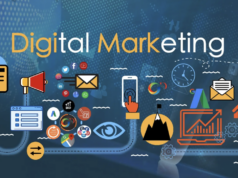
Ecommerce marketing is one of the hottest of all digital industries right now. Thanks to a growing tendency to buy retail products online, ecommerce operators need to pull out all the marketing stops to stay ahead of the competition.
But not all ecommerce marketing strategies work equally well. Enter the customer journey. Modern ecommerce marketing should account for it.
I remember the first time I was made aware of the customer journey. I was writing content for a hospitality site run by a company that had just begun implementing the client journey concept to better understand why some of their customers were repeat guests while others visited once and never came back.
Understanding the customer journey opened their eyes to things they had never considered before.
The customer journey concept is not limited to hospitality. It isn’t exclusive to multi-billion-dollar corporations that have endless amounts of money to spend on marketing.
The client journey concept is for every business regardless of size or scope. It is certainly appropriate for ecommerce.
An Easy Definition

Marketing experts can offer all sorts of complicated definitions of the client journey. Let us keep things simple here. Salt Lake City’s Webtek Digital Marketing defines the customer journey as the experience customers have with a brand or business from the start of a transaction to the end.
Note that the end of a transaction isn’t necessarily marked by a completed sale. Even in ecommerce, the journey continues with follow-up and client service.
Imagine you sell sneakers. The journey with a new customer begins as soon as that client first shows up on your website. If you sell on sites like Amazon and eBay, the journey begins when your sneakers appear in customer search results.
From that point forward, the client is on a journey that will end in some way, shape, or form. Hopefully, an actual purchase is in there somewhere.
Decisions Aren’t Made in Isolation
The customer journey concept can seem like a theoretical concept that has no value in the real world. But step back and think about this: very few decisions are made in isolation.
Almost every decision a person makes is the result of cascading events and/or thoughts. Those cascading events and thoughts are the customer journey in a business setting.
How did Mary and John find themselves looking at your sneakers? What brought them to your website? How long were they there and what did they do? Did they ultimately buy? And if so, did you follow up with them?
The answers to all those questions define Mary and John’s customer journeys. From a marketing standpoint, both of their journeys provide a lot of information about how they can be engaged with in the future.
Customer Persona Development
Creating customer personas is crucial in understanding the client journey. These detailed profiles represent different segments of your target market, including their preferences, behavior, and demographic information.
By developing these personas, businesses can tailor their marketing strategies more effectively. This personalized approach ensures that the marketing efforts are more relevant and resonate with the intended audience.
For example, a persona for a tech-savvy millennial will differ significantly from one for a retired baby boomer.
Understanding these nuances allows businesses to craft messages and offers that are more likely to engage each specific group, leading to higher conversion rates and customer loyalty.
Customer Touchpoints

The customer journey includes various touchpoints that collectively shape the overall experience. These touchpoints range from social media interactions and email communications to website visits and in-store experiences.
Each touchpoint offers an opportunity to positively influence the customer’s perception of the brand. For instance, a well-timed and personalized email can enhance a customer’s perception, just as a poor website experience can detract from it.
Mapping out these touchpoints and understanding their impact is crucial. Businesses should strive to create a cohesive and positive experience across all touchpoints, as this consistency significantly impacts client satisfaction and loyalty.
Data and Analytics
In today’s digital age, data collection and analytics play a pivotal role in understanding and optimizing the customer journey. Using analytics tools, businesses can track customer interactions across different channels and touchpoints.
This data provides invaluable insights into client behavior, preferences, and pain points. For instance, website analytics can reveal which pages are most engaging or where customers tend to drop off.
By leveraging these insights, companies can make informed decisions about where to focus their marketing efforts and how to refine their strategies to better meet client’s needs.
Personalization
Personalization is a key element in modern marketing strategies. Customers expect experiences tailored to their preferences and behaviors.
Personalized marketing can take many forms, from customized email content to targeted ads and personalized product recommendations on a website.
When marketing content is relevant to a customer’s journey stage, it significantly enhances engagement and conversion rates.
For example, a customer who has just made a purchase might be interested in complementary products, whereas a new website visitor might need more information about the brand and its offerings.
Feedback and Surveys

Direct client’s feedback and surveys are invaluable tools for gaining insights into customer experiences and preferences.
Regularly soliciting feedback, whether through post-purchase surveys, email questionnaires, or social media polls, helps businesses understand what they’re doing right and where they need to improve.
This feedback can reveal patterns and trends that might not be apparent from data analytics alone.
It’s a direct line to the customer’s thoughts and feelings about their journey and experiences with the brand. Actively listening to and acting on this feedback demonstrates a commitment to customer satisfaction and continuous improvement.
Competitor Analysis
Competitor analysis is an essential part of understanding the customer journey. By examining how competitors approach their client journeys, businesses can identify best practices and common pitfalls.
This analysis can reveal insights into competitor strategies, such as how they engage customers at different journey stages, what kind of personalization tactics they use, and how they gather and respond to customer feedback.
Learning from both the successes and mistakes of competitors can help businesses refine their own client journey strategies, ensuring they stay competitive and relevant in the market.
What Works and What Doesn’t

A major part of effective marketing is figuring out what works and what doesn’t. The things that do work are continued, promoted, and optimized. Things that don’t work are either modified or abandoned altogether.
Here is the thing about the customer journey: it can make defining what does and does not work easier.
Ecommerce marketing is about three things: presenting the opportunity to buy, encouraging the actual purchase, and following up to ensure the client returns in the future. Guess what? All three components are part of the customer journey.
When ecommerce marketers have a good understanding of the customer journey, they also have a better understanding of how to market to current and future customers. But without such understanding, ecommerce marketing is little more than taking shots in the dark and hoping for the best.












